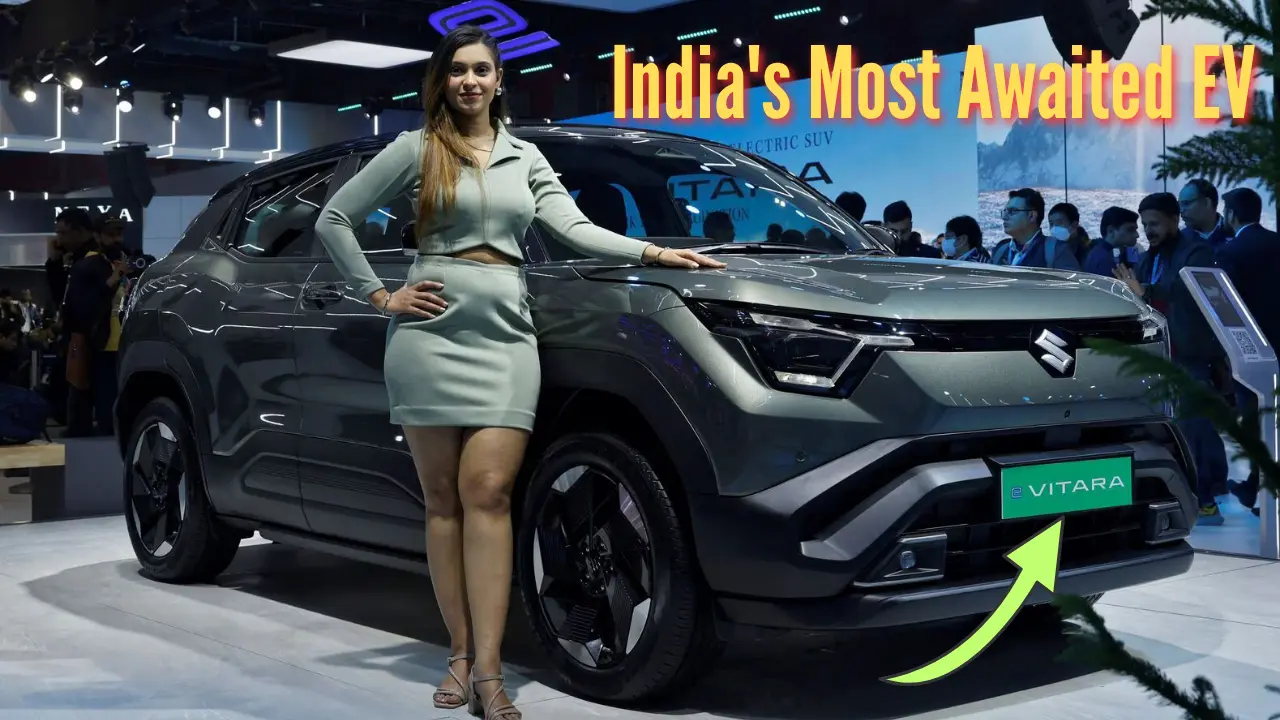Maruti Suzuki’s much-anticipated debut in the electric space, the e-Vitara, has hit yet another delay. Initially expected to hit showrooms in March 2025—and then May—it’s now officially been pushed to September.
That’s three reschedules for what’s arguably India’s most awaited electric car. For eager fans and potential buyers, it’s starting to feel like waiting for a big cricket match that keeps getting rained off.
Production Still on Track—Mostly for Exports
Despite the shifting domestic timeline, Maruti isn’t slowing down behind the scenes. The company plans to manufacture around 70,000 units of the e-Vitara this year, most of which are heading abroad. According to Chairman RC Bhargava, Indian customers will finally get their hands on the EV before the end of September—but the first batches will be export-focused.
Production will take place at Suzuki’s Gujarat plant, positioning India as the global hub for this new EV. It’s a classic Maruti strategy—test the waters at home while going full throttle internationally.
Read Also: Maruti Grand Vitara Becomes Fastest Mid-Size SUV to Hit 3 Lakh Sales
Design and Dimensions
The e-Vitara doesn’t look like a typical Maruti. It wears the brand’s new “Crafted Futurism” design language, with bold geometric lines and a modern, tech-forward aesthetic. At 4,275mm long, 1,800mm wide, and 1,640mm tall, it sits squarely in the mid-size SUV space. A 2,700mm wheelbase ensures decent room inside, and with 185mm of ground clearance, it should cruise over Indian roads without much fuss.
Up front, you’ll spot sharp-looking NEXtré 3-Point Matrix LED DRLs, sleek LED headlamps, and a fascia that wouldn’t look out of place in a sci-fi flick. Buyers will get ten colour choices—including four dual-tone options with a bluish-black roof.
Interior and Features
Hop inside, and you’re greeted by what Maruti’s calling its “Digital Cockpit Experience.” Translation? A 10.25-inch infotainment screen, a 26.04cm digital driver display, and all the connectivity you’d expect—wireless Apple CarPlay, Android Auto, and an Infinity by Harman audio system.
Creature comforts are also well covered:
- Ventilated seats up front
- 10-way power-adjustable driver’s seat
- Sliding and reclining rear seats (40:20:40 split)
- Fixed panoramic sunroof
- Ambient lighting in multiple colours
- Wireless charging pad
Powertrain Options and Performance
Maruti’s offering two battery packs with the e-Vitara. The base 49 kWh version delivers 142 bhp and 189 Nm, while the 61 kWh variant ups the power to 172 bhp—torque stays the same. Both versions are front-wheel-drive with a single electric motor.
Acceleration isn’t blistering, but it’s more than respectable for a daily driver. The smaller battery does 0-100 kmph in 9.6 seconds, while the bigger one shaves that down to 8.7 seconds. Top speed for both is capped at 150 kmph.
As for range, the larger battery promises over 500 km on a full charge—more than enough for most use cases. It also supports fast DC charging from 0 to 80% in about 45 minutes.
Safety That Covers All the Bases
Maruti’s not cutting corners on safety, either. The e-Vitara gets seven airbags, including a driver knee airbag, and a Level 2 ADAS suite. You’ll also find a 360-degree camera system and features like:
- Adaptive cruise control
- Lane keep assist
- Automatic emergency braking
- Blind spot monitoring
- Electronic parking brake with auto hold
- Four-wheel disc brakes
- Tyre pressure monitoring system
- Acoustic alert system for pedestrian safety
Variants, Pricing, and Where It Stands
The e-Vitara will be offered in three variants—Delta, Zeta, and Alpha. The Delta gets the 49 kWh pack, while the Zeta and Alpha will come with the larger 61 kWh battery.
Pricing is expected to range from ₹17 to ₹25 lakh (ex-showroom), putting it in direct competition with the Hyundai Creta EV, Tata Harrier EV, and MG ZS EV. Some dealers have even started taking unofficial bookings for ₹25,000.
Delay or Not, the Stakes Are High
Sure, the delay is frustrating. But Maruti says it’s using this time to beef up its EV ecosystem—setting up charging stations at dealerships and service centres, especially in smaller cities. That kind of groundwork could make a big difference in long-term EV adoption.
Whenever it finally arrives, the e-Vitara will signal more than just Maruti’s first electric vehicle—it’ll mark the start of a serious EV push from India’s biggest carmaker. And while the wait’s been longer than many hoped, if Maruti delivers on the hype, it just might be worth it.
